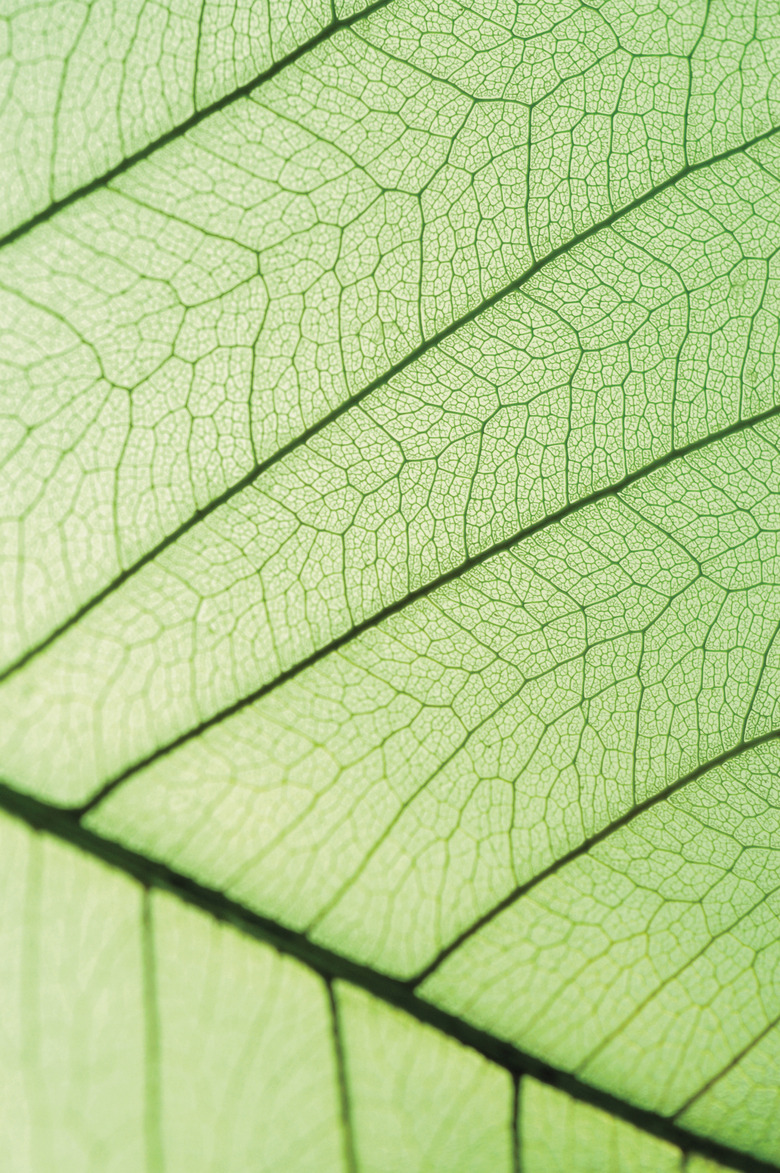What Is The Food Chain For The Woodlands Ecosystem?
Food chains describe "what eats what" in an ecosystem. No one food chain exists for a forest food web ecosystem, as many types of woodland ecosystems exist. Within those systems, there are many more intersecting food chains, or food webs. Some basic facts about food chains and the players involved make it possible to see consistent patterns and discover many possible food chains that occur in forest ecosystems.
Food Chain Trophic Levels
Food Chain Trophic Levels
Woodland habitat food chains begin with an autotroph, or "self-feeder," that synthesizes energy from the sun. Cell organelles that are found in most autotrophs, called chloroplasts, act like little factories, forging organic molecules from carbon dioxide and water. While most autotrophs in a woodland habitat food chain are plants, some bacteria, algae and other protists are also autotrophs.
Next in a food chain come various heterotrophs, which cannot make their own food and must consume autotrophs or other heterotrophs to survive. Heterotrophs that consume only plants are called herbivores. Animals that consume only animals are carnivores, those that eat both are omnivores, and those that eat dead organic matter are detrivores.
Food Chain Energy Transfer
Food Chain Energy Transfer
Food chains define the energy transfer that takes place when a succession of organisms eat other organisms. In a temperate deciduous forest, when a rabbit eats grass, grass is the primary producer and the rabbit the primary consumer. The rabbit receives chemical energy from the grass in the form of sugars, proteins and fats the plant made with energy from sunlight.
When a red fox — the secondary consumer — eats the rabbit, the energy moves to the fox. But the fox does not get all the energy from the food the rabbit has eaten. During the rabbit's life, some of its food energy is converted to kinetic energy — motion energy — and heat, both of which help the rabbit survive. Since the energy used, instead of stored, is not transferred in a food chain, energy is lost at every level.
A cougar — the tertiary consumer — eats the fox. Finally, when the cougar, fox and rabbit die, quaternary consumers, including scavengers like black vultures and insects, and decomposers — fungi and bacteria — eat them. Continuing up the food chain, other heterotrophs, including fungi-eating northern flying squirrels, eat the decomposers and obtain their chemical energy.
Temperate Deciduous Forest Food Chain
Temperate Deciduous Forest Food Chain
In a temperate deciduous forest, a food chain likely begins with an American beech tree. A red squirrel eats the nuts of the beech, a gray fox eats the squirrel, and a gray wolf eats the fox. Parasitic fleas, ticks and tapeworms living on or in the wolf can also act as tertiary consumers here.
When the gray wolf dies, scavengers such as black vultures, white-footed mice and raccoons eat the dead body. What is left of the carcass is further decomposed by carrion beetles, blowfly larvae, fungi and bacteria. Then a chipmunk eats the fungi or beetles, further extending the food chain.
Some energy transfers are an exchange. For example, the American pawpaw tree, found in some temperate forests, has evolved to smell like rotting meat to attract adult blowflies, which eat its nectar and also act as pollinators. And when a cedar waxwing or other animal consumes fruit from the black cherry tree in the first stage of a woodland food chain, it not only gains energy but also disperses the seeds of the berries in its droppings.
Tropical Rain Forest Food Chain
Tropical Rain Forest Food Chain
In a tropical rain forest, one food chain begins when a howler monkey eats the fruit of a strangler fig. An Amazon tree boa consumes the monkey, a jaguar eats the boa and, when it dies, the jaguar will become food for scavengers and decomposers, including the king vulture, army ants, giant millipedes and velvet worms.
The strangler fig, oddly, began its life as an epiphyte, a rootless plant living high in a tree on airborne nutrients, which then grew vines down to the ground that eventually root and strangle the host tree. In another complex detail of the food chain, a fig wasp queen enters the fruit of a strangler fig, fertilizes the fig's ovaries with pollen from other fig trees, lays her eggs and dies. The fig digests her body, and she has also become an initial part of the food chain.
References
- IB Guides: Communities and Ecosystems
- University of Michigan: The Flow of Energy: Primary Production to Higher Trophic Levels
- Blue Planet Biomes: Deciduous Forest
- World Builders: A Food Chain in the Temperate Deciduous Forest Biome
- South American Amazon Rainforest: Amazon Animals
- Ecological Society of America: The Story of the Fig and Its Wasp
- Cloudbridge Nature Reserve: The Strangler Fig
Cite This Article
MLA
Carter, Kari Norborg. "What Is The Food Chain For The Woodlands Ecosystem?" sciencing.com, https://www.sciencing.com/food-chain-woodlands-ecosystem-9921/. 31 July 2019.
APA
Carter, Kari Norborg. (2019, July 31). What Is The Food Chain For The Woodlands Ecosystem?. sciencing.com. Retrieved from https://www.sciencing.com/food-chain-woodlands-ecosystem-9921/
Chicago
Carter, Kari Norborg. What Is The Food Chain For The Woodlands Ecosystem? last modified August 30, 2022. https://www.sciencing.com/food-chain-woodlands-ecosystem-9921/
